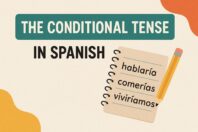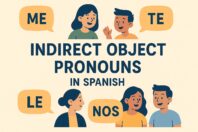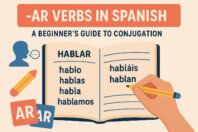Me Gusta! How to Say You Like Things in Spanish

Get our free email course, Shortcut to Conversational.
Have conversations faster, understand people when they speak fast, and other tested tips to learn faster.
More infoHow do you say “I like _____” in Spanish?
Me gusta is one of the most useful basic expressions. We’re constantly talking about things we do and don’t like, and it’s no different in Spanish.
But, this can be a tricky verb, as in some cases it doesn’t follow the normal rules. Fear not, by the end of this post you will get it.
We’ll also cover how to say you love something, want something, or hate something.
“I like” in Spanish: Me gusta
- Me gusta el helado (I like ice cream).
- A Manuel le gusta leer. (Manuel likes to read)
- A Ana le gusta el chocolate. (Ana likes chocolate)
“I don’t like”: No me gusta
- No me gusta el brócoli (I don’tlike broccoli).
- A Camila no le gusta madrugar. (Camila doesn’t like waking up early)
- No me gusta trabajar los domingos. (I don’t like working on sundays)
Conjugation
Notice, this is different from how things “usually” are for conjugations. The verb isn’t changing, we’re just changing the object in front. While confusing in relation to other Spanish verbs, if you look at it from an English standpoint – it’s pretty simple.
Instead of “I like” it’s “me gusta”. “You like” is “te gusta”. See how we’re just making the I/you/she/etc change the part in front, and then leaving the “like” as “gusta”?
| English | Spansih |
|---|---|
| I like | Me gusta |
| You like | Te gusta |
| He likes | Le gusta |
| She likes | Le gusta |
| It likes | Le gusta |
| You like (plural) | Les gusta |
| We like | Nos gusta |
| They like | Les gusta |
“Love” verb in Spanish: Amar
- Yo amo a mi familia (I love my family).
- Gustavo ama a su país. (Gustavo loves his country)
- Daniel ama a su esposa. (Daniel loves his wife)
Conjugation
Now, we’re back to normal conjugations ?
| English | Spanish |
|---|---|
| I love | Yo amo |
| You love | Tú amas |
| You love (formal) | Usted ama |
| He loves | Él ama |
| She loves | Ella ama |
| It loves | Eso ama |
| You love (plural) | Ustedes aman |
| We love | Nosotros amamos |
| They love | Ellos aman |
To make it negative (I don’t like), just add “no” in front of the verb. For instance “yo no amo” (I don’t love). If you are talking about loving someone, for instance “les amo” (I love them), to negate it, the “no” goes before all of that, “no les amo” (I don’t love them).
“Hate” verb in Spanish: Odiar
- Él odia las mentiras (He hates the lies).
- Gabriel odia llegar tarde. (Gabriel hates arriving late)
- Luz odia a su jefe. (Luz hates her boss)
Conjugation
Again, standard conjugation. Easy peasy!
| English | Spanish |
|---|---|
| I hate | Yo odio |
| You hate | Tú odias |
| You hate (formal) | Usted odia |
| He hates | El odia |
| She hates | Ella odia |
| It hates | Eso odia |
| You love (plural) | Ustedes odian |
| We love/td> | Nosotros odiamos |
| They hate | Ellos odian |
“Want” verb in Spanish: Querer
- Ella quiere un perro (She wants a dog).
- Carlos quiere ver a su familia. (Carlos wants to see his family)
- Valentine quiere dulces. (Valentine wants sweets)
Negative Examples
- Yo no quiero verte más (I don’t want to see you anymore).
- Él no quiere ir a clase. (He doesn’t want to go to class)
- Los niños no quieren comer vegetales. (The kids don’t want to eat vegetables)
Conjugation
There are a few irregular conjugations for this verb, but we use it so often that you’ll want to memorize it cold. Get our flashcards to do that for free here.
| English | Spanish |
|---|---|
| I want | Yo quiero |
| You want | Tú quieres |
| You want (formal) | Usted quiere |
| He wants | El quiere |
| She wants | Ella quiere |
| It wants | Eso quiere |
| You want (plural) | Ustedes quieren |
| We want | Nosotros queremos |
| They want | Ellos quieren |
Note: Quiero also means “I love”, depending on the context (but it’s usually I want). For instance, “te quiero” means “I love you”, but it’s much less serious than “te amo”. For instance, girls will tell their girlfriends “te quiero” all the time, but not “te amo”. If you’re dating someone, “te quiero” is when you’re dating after awhile, and “te amo” is when things get really serious. “Te amo” is very strong.

Unsure what to learn next?
Download the exact curriculum that thousands of BaseLang students have used to become fluent in Spanish.
Download Guide Now!
“Do you like?” in Spanish: ¿Te gusta?
To ask for preferences in Spanish we follow this structure:
¿Nosotros queremos comer más?
Conjugation + complement
Both have the same meaning. Here are more examples:
- ¿Te gusta ir de fiesta? (Do you like to party?)
- ¿Te gustan los animales? (Do you like animals?)
- ¿Te gusta aprender con BaseLang? (Do you like learning with BaseLang?)
Me Gusta Practice
Now, complete this according to your likes and dislikes.
There’s no answer key for this since it’s just your personal opinion.
- Me gusta _________________________________________________
- No me gusta _____________________________________________
- Yo amo ___________________________________________________
- Odio ______________________________________________________
- Yo quiero ________________________________________________
- Yo no quiero _____________________________________________
For more free practice, click here to get our private flashcards.
That’s all for this post! If you’re still confused or have questions, leave a comment and we’ll help you out ?



